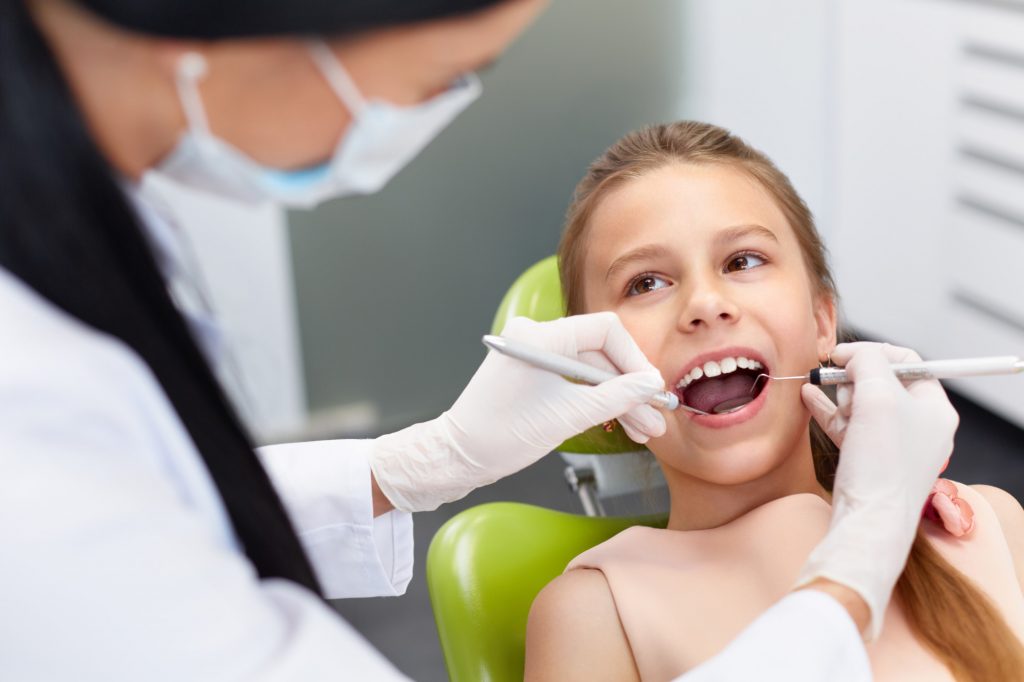Why You Need to See a Children’s Dentist for Tooth Decay

Recent statistics on tooth decay in kids revealed that 23% of UK children aged 5 had dental caries in 2019. Whilst that doesn’t show an increase from 2017, it also means that there was no improvement. In addition, dental cavities occur in three to four teeth, on average, in each affected child.
It’s also crucial to note that almost 90% of hospital tooth extractions in kids up to 5 years old are preventable.
All this highlights the need for your little one to see a children’s dentist regularly.
Why exactly should you bring your child to a paediatric dentist, though? Won’t a general dentist suffice? Moreover, what are the restorative and preventative treatments for tooth decay in kids?
We’ll answer all these questions and more below, so please be sure to read on.
What Is a Children’s Dentist?
In technical terms, a children’s dentist is a paediatric dentist. This type of dentist specialises on the dental health of children up to the age of 15. These specialist dentists help prevent, diagnose, and treat oral diseases in young patients.
In the UK, only about 10% of registered dentists have a specialisation. Paediatric dentistry is one of these specialisations. As such, it requires further education and training.
Why Specifically Choose a Paediatric Dentist?
Children’s dentists take on additional training after dental school. This is essential, as it’s during childhood that the oral cavity develops. Moreover, children have specialised needs and are more sensitive to pain and discomfort.
In addition, children can have a more pronounced dental fear and anxiety (DFA). Studies suggest that 5% to 20% of kids experience DFA, with many of them even suffering from dental phobia.
This is why it’s crucial for your little to see a dentist trained in paediatric dentistry. A children’s dentist has the professional and personal qualifications to address these issues. They are warm and caring, which, in turn, help younger patients feel less nervous and more at ease.
Signs of Tooth Decay in Children
Tooth decay and toddlers’ front teeth discolouration often go hand in hand. The same goes for adolescents and teens.
At their early stages, dental cavities show up as white spots that are lighter than the rest of the teeth. These “stains” indicate the enamel (the outermost part of the teeth) is breaking down.
Toddlers to teens may also complain about pain when eating something sweet, hot, or cold. From here, the cavity can cause the affected tooth to develop light brown stains. The longer the decay goes untreated, the darker the discolouration becomes.
With that said, take these early signs of tooth decay and toddlers complaints as your cue to see the dentist.
How Does a Children’s Dentist Treat Tooth Decay in Kids?
All tooth decay treatments in kids start with a thorough but gentle dental exam. This helps the dentist assess the extent of the decay, as well as the number of affected teeth. From here, the children’s dentist can determine which solution is best for your little one.
Dental Fillings
Most dental fillings today use composite resin materials. These are white or tooth-coloured fillings that dentists use in both kids and adults. Amalgam (silver) fillings are still available, though, be sure to talk to the dentist about this.
In either case, fillings replace the lost enamel and minerals in the teeth.
Before placing the filling, the dentist needs to clean the affected tooth first. To help reduce discomfort, the dentist uses a numbing solution in the treatment area. The dentist will keep conversing with your child to help your little one feel at ease throughout.
Once the anaesthetic takes effect, the dentist can then start to clean the tooth to remove the cavity. After this, the filling material can go into the tooth.
If you’ve chosen white fillings, the dentist will use a fast and safe light to cure the material. This is a very efficient process to ensure that the filling adheres to the tooth.
Amalgam fillings, on the other hand, don’t require light to set. The dentist only needs to compress the metal mixture into the cavity. The material then dries and hardens quickly into a solid filling.
Extraction
A children’s dentist prioritises dental decay treatment before extraction. However, if the cavity is too severe, removing the tooth may already be in order. That’s because the decay can spread to the adjacent teeth, putting them at risk too.
That’s why it’s important to see a paediatric dentist as soon as you notice signs of tooth cavities. Whilst “baby teeth” are temporary, they still need optimal care and attention. When they fall out or get extracted earlier, it may affect the oral development of your little one.
Preventing Tooth Decay in Children
Dental problems in children lead to an average of three missed school days per child. Some of them have even shown to miss school for 15 days. What’s more, over a third of kids suffer from sleepless nights because of oral pain.
As a parent, you strive to keep your little one away from these painful situations. It’s completely doable, as tooth decay in children (and adults) are largely preventable.
One way that a paediatric dentist can help is by applying fissure sealants on your child’s teeth. This material forms a protective barrier on the outside surfaces of the molars. They keep away food and bacteria from lodging in the tiny crevices and grooves of the teeth.
Another effective preventative measure is through regular dental cleanings and check-ups. Oral hygiene treatments help get rid of plaque and tartar build-up on the teeth and gum line. These are the primary causes of not only tooth decay but also gum disease.
Don’t Let Decay Take Your Child’s Teeth Away
As you can see, a children’s dentist is crucial to your child’s health and overall well-being. This dentist can treat and prevent tooth decay. In turn, this helps reduce your little one’s risks of suffering from pain and tooth loss.
Is your child exhibiting symptoms of dental cavities? If so, then please know that our team here at Horsley Dental is ready to help. Please get in touch with us now so we can help preserve your little one’s pearly whites.

BSC, BDS (KING’S COLLEGE LONDON), MJDF RCS (ENG)
PRINCIPAL DENTAL SURGEON, GDC NO: 177407
Shiral qualified from King’s College London with degrees in Biomedical Science in 2004 and Dentistry in 2009. Shiral went on further to complete her membership in the joint dental faculties (MJDF) examinations with the Royal College of Surgeons. Shiral has undergone extensive training in both practice and hospital.
Shiral is the new Principal owner of Horsley Dental, your local Leatherhead dentist.

